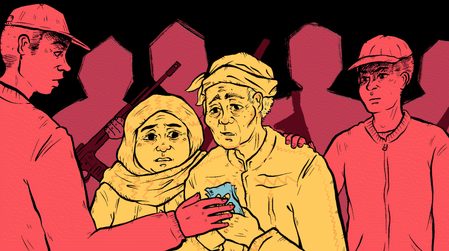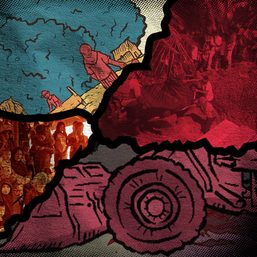SUMMARY
This is AI generated summarization, which may have errors. For context, always refer to the full article.

CAGAYAN DE ORO, Philippines – As indigenous communities throughout the Philippines face continued displacement from their ancestral lands due to development projects, advocates in Mindanao highlighted the need for a “culture-sensitive government.”
Bae Rose Undag, a social welfare development worker for indigenous peoples (IP) in Cagayan de Oro City, emphasized the importance of respecting IP rights.
“This is their life – land [and] nature. How will they govern if this is gone?” she said on Friday, November 24, in a #FactsFirstPH forum organized by Rappler, Xavier University, and other coalition partners at Xavier University-Ateneo de Cagayan.
The forum included a closed-door briefing about Rappler’s investigative report series, The Kusiong Story Project, that details the governance and political failures that led to the deaths of at least 27 Teduray from landslides in Maguindanao del Norte in October 2022.
The Teduray were caught in the fatal landslides after they were forcefully displaced from their ancestral lands.
Undag, alongside Easter Canoy, head of the Kitanglad Integrated NGOs, said that unauthorized encroachment on ancestral lands not only disregards the rights of IPs but also disrespects the spirits believed to inhabit the area.
“That’s why we don’t want anyone to enter [IP areas] without free, prior, and informed consent, because it’s not just humans you might harm, but spirits as well,” Undag stressed.
Canoy also pointed out that due to Western influence on how land and communities are divided and organized, the culture and beliefs of the natives are being trampled upon.
“You can imagine how a colonial government with Western knowledge tries to rearrange our society to its pleasure and desecrate sacred domains which are the cathedral of indigenous people,” Canoy said.

She underscored the deficiency in Philippine society’s understanding of indigenous knowledge, citing the Kitanglad mountain range in Bukidnon as an example.
This mountain range is home to the tribes of Bukidnon, Higaonon, and Talaandig. Canoy, who is an anthropologist, was able to map more than 70 sacred zones, with more yet to be discovered.
Among the IP communities that were displaced because of politics and lack of cultural sensitivity is the Teduray in Mindanao.
From the coastlines of the village, they were relocated to the foothills of Mount Minandar in Maguindanao del Norte to give way to some private resorts, one of of them owned by a political family.
This is despite the Teduray belief that villages must not be established at the foot of the mountain because it is a passageway of the mëginalëw (spirits) from the supernatural world to the earth, and vice versa. If unavoidable, rituals must be performed out of respect before occupation.
The relocation of the Teduray was met with tragedy. At least 27 Teduray – mostly children – were buried in mud after fatal landslides triggered by Severe Tropical Storm Paeng hit them in October 2022.
From the IP perspective, the tragedy happened because the spirits were angered by the houses and the peoples’ noises that disturbed them, explained the Timuay Justice and Governance, a traditional leadership and political structure of the Teduray and Lambangian tribe.
“There’s so much of a space wherein the cultural solution has always been waiting for us: a culture-sensitive government,” Canoy said.
Finding solutions together
The November 24 briefing by Rappler journalists behind the Kusiong Story Project was attended by 36 participants from various groups such as IP rights groups, local government, academe, students, church, and local media.
On Wednesday, November 29, Rappler hosted another briefing, this time virtual, for a broader mix of groups interested in the Kusiong tragedy and possible solutions. The forum tackled gaps in hazard and risk assessments in the Bangsamoro region, challenges facing the passage of an inclusive and representative non-Moro IP code, and accountability for those who violate IP rights.
Among those present were international and local development groups, IP rights advocacy groups, disaster resilience experts, media, members of the academe and IP groups, Bangsamoro government officials.
Both briefings were organized by Rappler’s Community team as part of efforts to link journalism to policy makers and affected groups for impact. The goal is to ensure that in-depth journalistic work like the Kusiong Story Project catalyzes important policy discussions and action towards concrete solutions for communities left behind. – Rappler.com
Add a comment
How does this make you feel?















There are no comments yet. Add your comment to start the conversation.